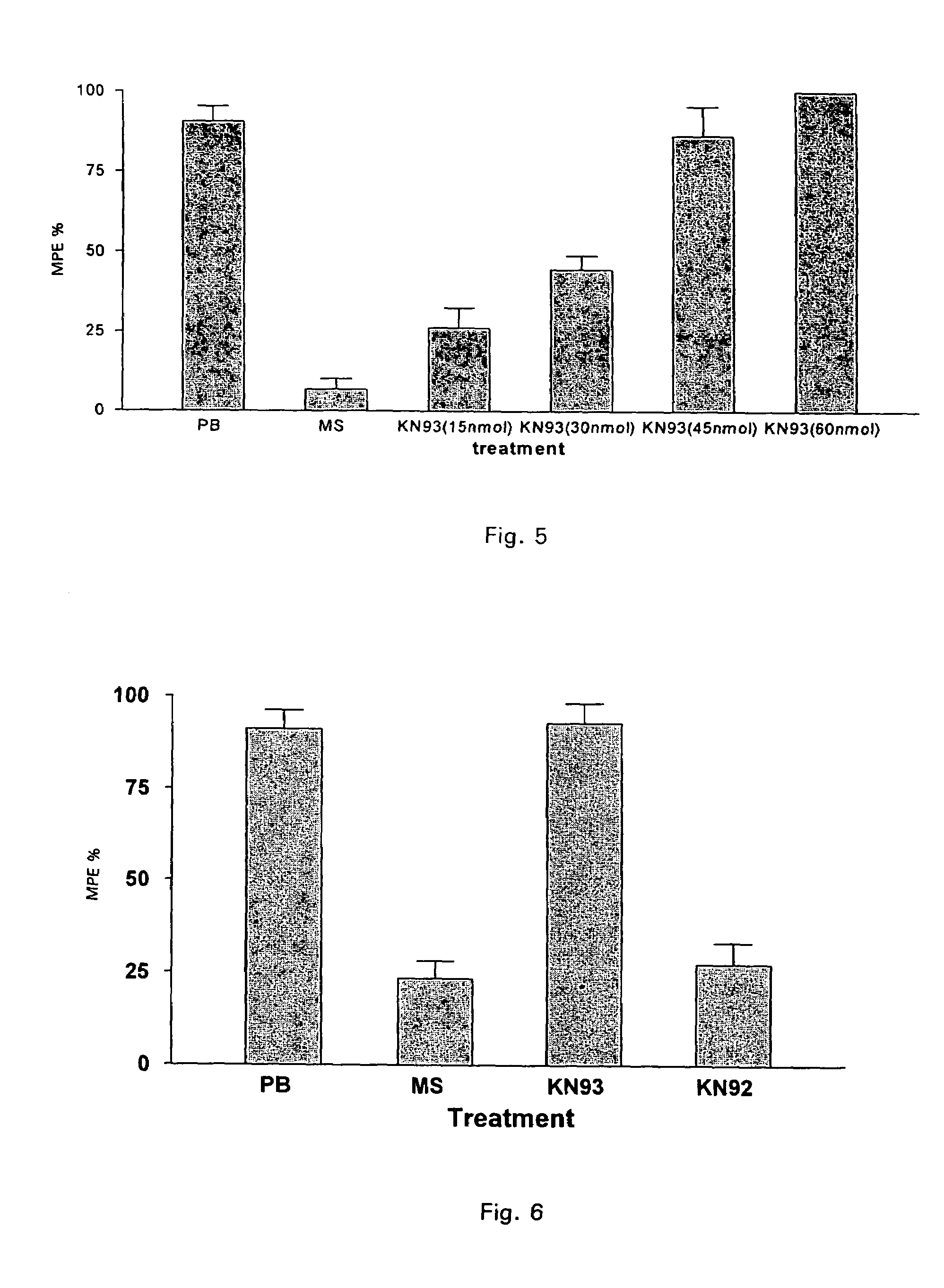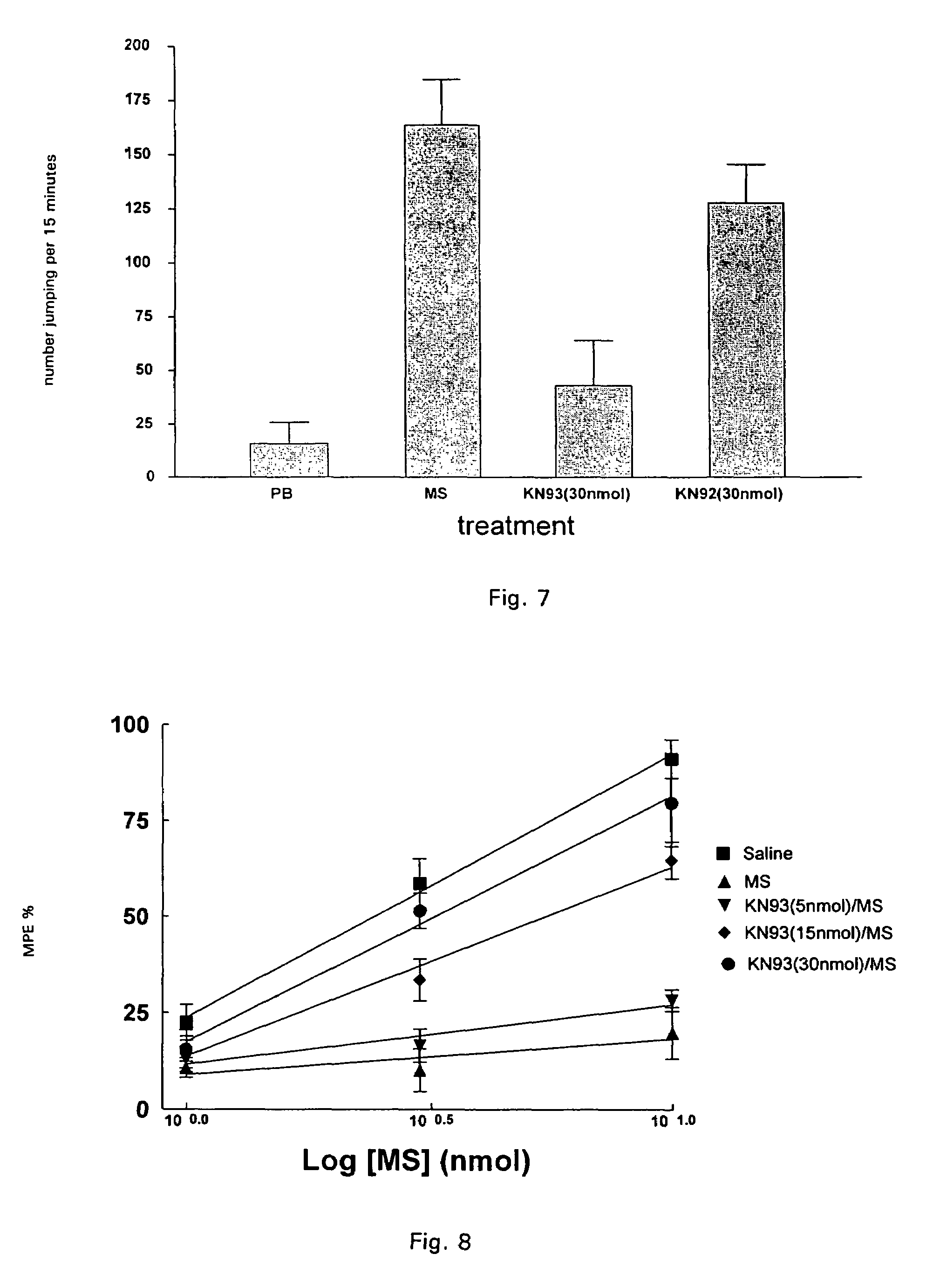Method and composition for potentiating an oplate analgesic
a technology of oplate and analgesic, which is applied in the field of pain treatment, can solve the problems of increased side effects, frequent dose escalation, insufficient pain control, etc., and achieve the effects of restoring the effectiveness of a low dose of opiate analgesic, reducing the severity of various adverse side effects, and preventing tolerance to opiate analgesics
- Summary
- Abstract
- Description
- Claims
- Application Information
AI Technical Summary
Benefits of technology
Problems solved by technology
Method used
Image
Examples
Embodiment Construction
[0035]Currently no therapy or adjuvant therapy exists for the prevention or reversal of opioid tolerance. When tolerance occurs, which is inevitable in all prolonged users of an opiate analgesic, the treatment choice is dose-escalation, which leads to increased adverse side effects, including a higher probability of drug dependence. In some cases, tolerance occurs so dramatically and quickly that even a large dose increase may not control pain.
[0036]The present invention is directed to the simultaneous or sequential administration of an opiate analgesic and a CaMKII inhibitor to prevent and / or treat pain. In particular, administration of morphine and a CaMKII inhibitor to rats shows that a CaMKII inhibitor restores the effectiveness of morphine in animals that are tolerant to even very large doses of morphine. Accordingly, the dose of morphine can be reduced, while providing an analgesic effect equivalent to administering a higher dose of morphine alone. The reduced dose of morphine...
PUM
| Property | Measurement | Unit |
|---|---|---|
| diameter | aaaaa | aaaaa |
| length | aaaaa | aaaaa |
| volume | aaaaa | aaaaa |
Abstract
Description
Claims
Application Information
 Login to View More
Login to View More - R&D
- Intellectual Property
- Life Sciences
- Materials
- Tech Scout
- Unparalleled Data Quality
- Higher Quality Content
- 60% Fewer Hallucinations
Browse by: Latest US Patents, China's latest patents, Technical Efficacy Thesaurus, Application Domain, Technology Topic, Popular Technical Reports.
© 2025 PatSnap. All rights reserved.Legal|Privacy policy|Modern Slavery Act Transparency Statement|Sitemap|About US| Contact US: help@patsnap.com



